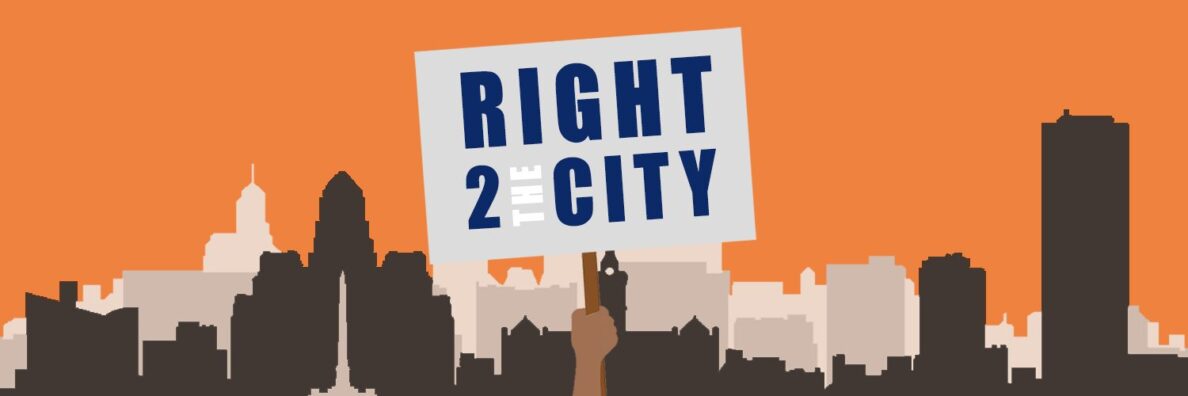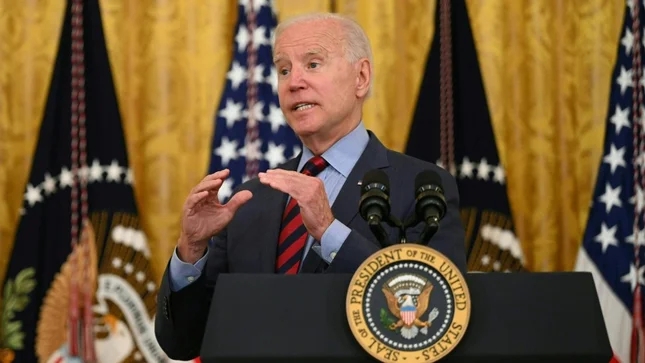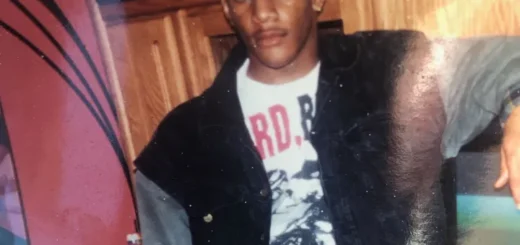BLACK HISTORY MONTH: Inzajeano Latif
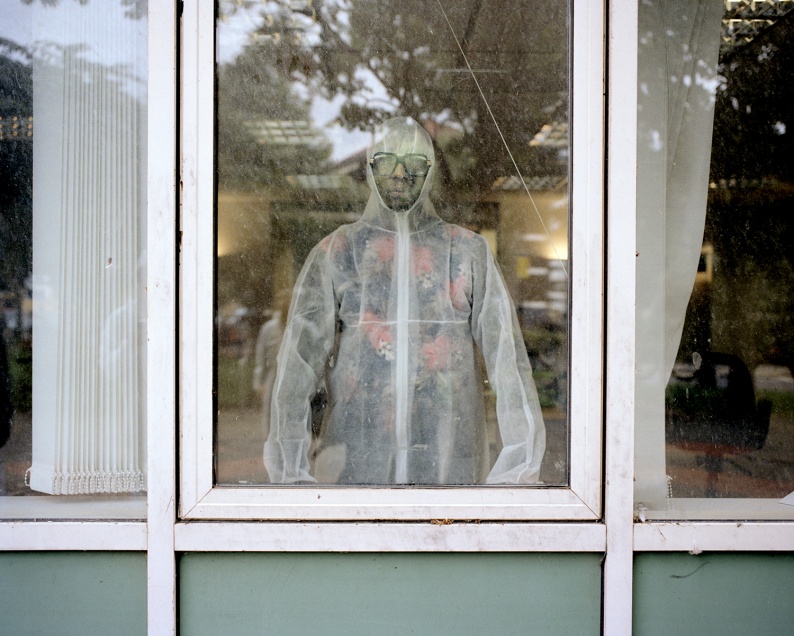
This is Inzajeano Latif’s Tottenham. An autobiography told through considered street portraits of the marginalised of Tottenham.” In telling their story, Inz tells his own story. “We’ve been fucked,” he says. “We’ve been fucked by systemic structural racism. We’ve been shafted. We’ve been taken. We’ve grafted for every morsel… and they are still doing it to us. In Tottenham, Inz says the struggle for basic opportunities and the battle for survival are characteristic features of everyday life and culture of the marginalised. Our realities, he argues, are the same as the realities of the marginalised of the earth–from the suburbs of France to Johannesburg, South Africa and Lima, Peru, Rio de Jeneiro, Brazil to Baltimore, Ferguson and Lincoln Heights U.S.A. Everywhere the marginalised are being fucked. Everywhere we are dealing with the same circumscribed life chances and socioeconomic problems, including injustice and police violence. And everywhere, including Tottenham, he says the outsiders view the places where we live as ghettos—blighted spaces that need transforming or removing.
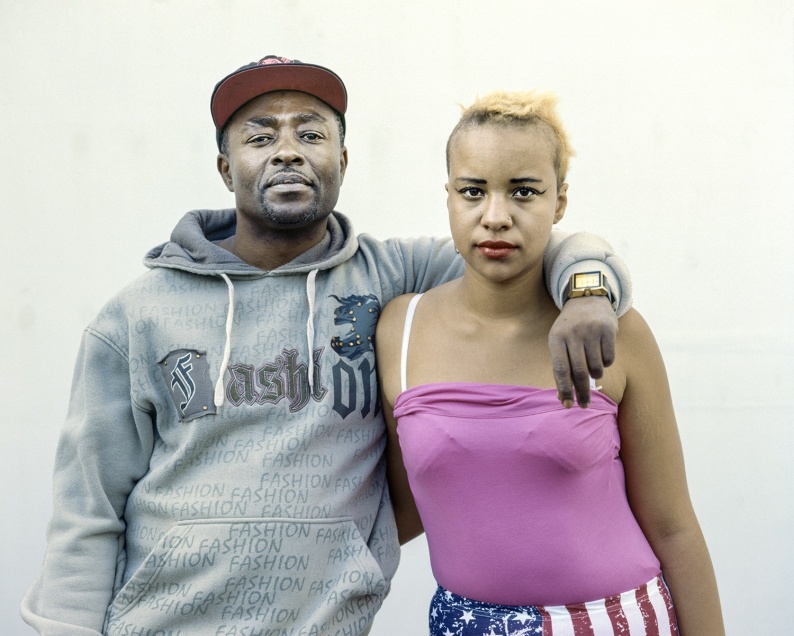
The renowned radical social documentary photographer, Milton Rogovin called his marginalized subjects the “forgotten ones.” Inz disagrees. The marginalized of Tottenham are not “forgotten,” they are invisible. Forgotten is a passive act of omission, while marginalization is an aggressive act of exploitation and oppression. For someone to be forgotten, he/she must have been known at some time. They must have been understood, and their voices heard, stories appreciated, and cries of discomfort and pain acknowledged. Knowing, then, is a prerequisite of forgetting. The marginalized of Tottenham are not forgotten, they are invisible.
The outsiders see them, but not really. They hear them, but not really. The outsiders do see the places where they live, work, and play; but they conceptualize these places as a scarred and blighted landscapes, which needs to be saved, celebrated and remade for them; they see the place, but not the marginalized people occupying it. They are invisible, and the outsiders see only their stereotypical sketches.
The gentry has issued a clarion call. Let’s Move to Tottenham. Happy talk abounds, and Tottenham is being brutally gentrified. Its rich past and diverse history are being erased one planning contract at a time. The Guardian says regeneration has arrived. Cranes are omnipresent, and outsiders with skinny jeans and laptops are everywhere. Slick studies and brochures explain how the planners and developers will transform Tottenham into a better place – a safe, secure and attractive place to live; a well-connected place; low carbon development; a high quality public realm network; a prosperous hub for business; cultural diversity—a place remade for the outsiders.
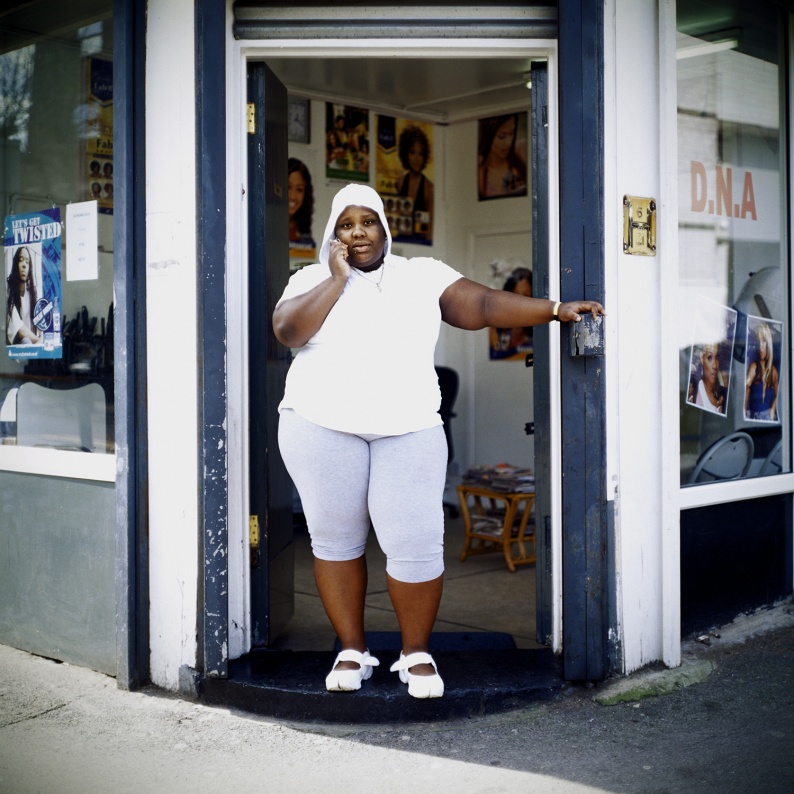
Inz rages. The Happy talkers, the outsiders, want to erase our ghetto, our Taj Mahal, and our sacred place, he says. This “bloodclaat jungle,” he passionately states, “was our womb; it was the place where we gestated. In this turbulent world, where we wallowed in the vortex of drugs, rock and roll, weed, jungle music, and yeah sex… in this rabbit hole of exploitation despair, abuse, oppression, sklit and psychedelic trips, where we soared throughout the universe until crash landing on the extraordinarily ordinary streets of Tottenham, we searched for our humanity, identity, purpose and destiny.”
Inz does not romanticise the harshness of “his Tottenham.” Life was a daily grind. Poverty, low- income and the precarity of work turned our world into a treadmill—you’re always running, but going nowhere. Our neighbourhood was laced with race and class tensions, along with fights and bitterness. Yet, there were times when the marginalised of Tottenham turned anger and self-hatred outward. Like ancient warriors turned rebels with a cause, they fought injustice and police violence—remember the Broadwater Farm, Brixton and the Mark Duggan rebellions. In these pitch battles, the marginalise gave voice to Franz Fanon’s wretched of the earth. They did not change the world, but they did proclaim to the outsiders, “We have a right to the city.” Inz smiles reflectively. The outsiders thought our Tottenham was a hellhole, but to us it was a womb—a place of gestation. We evolved. We grew. And one day we emerged from that womb as men, women, parents, workers and guardians of the children—we were the proud, the strong, and the determined. We were/are the marginalised of Tottenham.
Inz discovered his destiny and forged his identity in that womb. In the process, he discovered Tottenham, its landscape, its people and himself. As he gazed across the bloodclaat jungle, where fuckery gives life, Inz saw the photographer Devin Allen’s A Beautiful Ghetto in “his Tottenham.” His considered street portraits were designed to portray that “beautiful place and to make the invisible visible. By titling his portraits, This is Tottenham, Inz centers the marginalised and defined this north London community through their eyes. The images, then, represent Tottenham. This is not the outsiders Tottenham. This is Inz’s Tottenham.
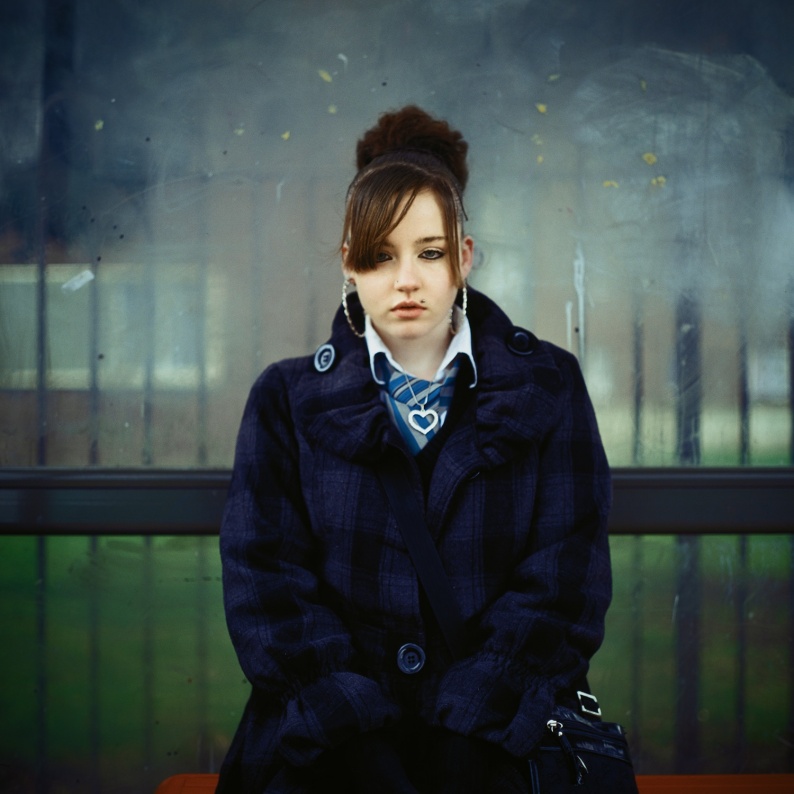
The outsiders render the marginalised invisible through an othering process, which allow them to see only stereotypical images and apriori notions of who they think the marginalised are. By othering them, the outsiders transform the marginalised into caricatures of who or what they want them to be. Inz brilliantly obliterates this dehumanising othering process by foregrounding the marginalised of Tottenham in his street portraits, while simultaneously backgrounding and turning their physical surroundings into a passive backdrop. Then, he exposes the steely coldness of the physical environment in select images, along with pictures that illuminate uneven financial investment, malignant detachment, and the uncaring of neglect. And yet in the midst of these depictions of the cold, heartless structures of Tottenham, he conjures up the symbolism of Miyamato Musahi’s Red Leaf with its badge of courage, rebirth, hope, and victory.
This strategic approach forces the outsider to see the marginalised of Tottenham; to view them as real people—dignified, proud, and human. This way, Inz demands that you confront them and answer the paraphrased question immortalised by the black abolitionist and slave fugitive, Sojourner Truth, “Ain’t I a person? Ain’t I a resident?” Deeply embedded in this question is the battle cry popularised by Henri Lefebvre’s credo, “Right to the City.” The marginalised of Tottenham proclaim, “We have a Right to Tottenham!”
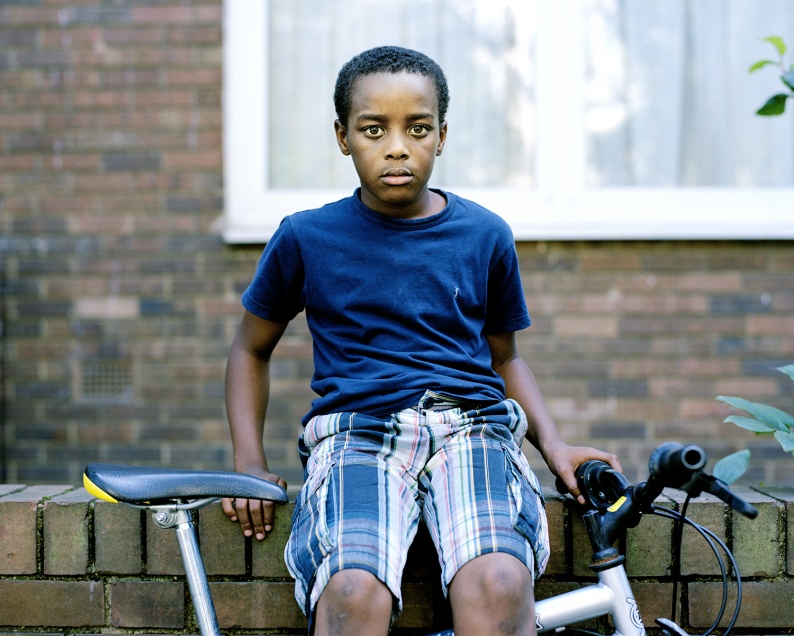
Gazing into the eyes of the marginalised of Tottenham, you can hear the boisterousness of their silence; you can hear their demands for justice and an end to marginalisation. The marginalised are trapped in a space-time warp between the hard and gentrified worlds of Tottenham, and the rebelliousness Inz uses in his photographic wizardry to aid in their freedom struggle by exposing and repudiating the lie of gentrification. In Tottenham and across the Global North and South, the marginalised are battling against the forces of gentrification and displacement, which are new layers added to the socioeconomic burdens they already carry. Inz, in the photographic salvos he delivers in this low-intensity warfare, raises political consciousness by calling attention to gentrification, and exposing it as an urban profit-making venture that seeks to destroy the places and spaces occupied by the marginalised of Tottenham. He forces us to rethink beauty and to confront the injustice that is interwoven with the very way we build cities and imagine happiness and the good life.
In this powerful photo-essay, Inz illuminates Tottenham’s duality – the places and spaces might be blighted, but they are also home to real people, dignified folks with hope, desires and aspirations. Their neighbourhood should be turned into a better place to live, work and play, but this regeneration should be for the actually existing population—the marginalised of Tottenham–not the outsiders. These considered street portraits are a tribute to Inzajeano Latif, as well as a manifesto of the marginalised of Tottenham and of the earth.
References:
Allen, Devin. A Beautiful Ghetto. Chicago: Haymarket Books. 2017.
Glass, Ruth. London: Aspects of Change. London: MacGibbon & Kee, 1964
Gwaltney, John Langston. Drylongso: A Self-Portrait of Black America. New York: the New Press, 1993.
Harvey, David. Rebel Cities: From the Right to the City to the Urban Revolution. London: Verso, 2012.
Katz, Michael B. Why Don’t American Cities Burn? Philadelphia: University of Pennsylvania Press, 2012.
Musashi, Miyamato. Book of the Five Ring Holybooks.com. Originally published in 1644. Rogovin, Milton, Michael Frisch. Portraits in Steel. Ithaca: Cornell University Press, 1993. Standing, Guy, The Precariat: The New Dangerous Class. London: Bloomsbury, 2014.
https://inzajeano.com/-about
Author Profile
Latest entries
 Selected Media05/04/2024The Occupation of Hayes Hall: Student Rebellions and Remaking the U.S. UniversityThe Occupation of Hayes Hall
Selected Media05/04/2024The Occupation of Hayes Hall: Student Rebellions and Remaking the U.S. UniversityThe Occupation of Hayes Hall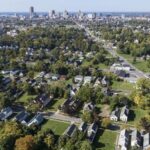 Selected Media03/21/2024Ryan’s infill housing strategy is the right plan for Buffalo
Selected Media03/21/2024Ryan’s infill housing strategy is the right plan for Buffalo Selected Media03/01/2024How We Change the Black East Side: From “The Harder We Run” to “Black Neighborhoods Matter”.
Selected Media03/01/2024How We Change the Black East Side: From “The Harder We Run” to “Black Neighborhoods Matter”. Selected Media05/02/2023Tension between the U.S. and China is growing.
Selected Media05/02/2023Tension between the U.S. and China is growing.
